Kun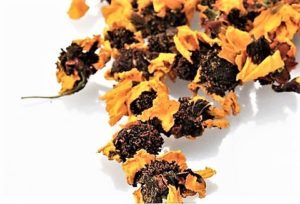 lun Mountain Snow Chrysanthemum tea is as striking to taste as it is to look at.
lun Mountain Snow Chrysanthemum tea is as striking to taste as it is to look at.
It’s a candidate for any list of the world’s best herbal teas. But it also has a rich, aromatic whole leaf black tea flavor. It’s caffeine free but with a caffeine-ish zip. Additionally, it makes a terrific do-it-yourself blending ingredient for pu-ehrs and oolongs.
The Kunlun snow flower
The Kunlun mountain snow flower grows only in the region of Xinjiang, in one of the most remote areas of China. It’s unique in being the only high mountain wild chrysanthemum, with blossoms harvested at 10,000 feet of elevation, two miles. (It’s popular as a health tea. Leading Pharma firms are moving to grow it in lower and less challenging environments. That means a different soil and climate. And likely result.)
The Kunlun chain is the longest mountain range in Asia. It stretches along the Tibet Plateau from North West to Central China. Kunlun and its mountains and desert surroundings are very harsh. A tourist review picks out the Kunlun Gates of Hell as a world Top Ten Terrifying site.
High levels of magnetism are among its main features. These lead to frequent lightning strikes. A three-day trip here may mean half a dozen landslides to negotiate. The Kunlun region has among the highest levels of seismic activity in the world.
Xinjiang province marks the population boundary between mainstream China’s Han population and the Western Uyghurs. They are of Turkish, Mongolian, Caucasian and Central Asian origin. The relationship has been turbulent. It still often borders on conflict. The government has transplanted Hans to erode the Uyghur independence. The culture is “different”: multiple languages, cuisine, arts, music and terrain.
The Kunlun mountain snow bud
The Mountain Snow chrysanthemum is decidedly different, too. The yellow daisy-like bloom with its bright red center grows wild. The smallholder farmers pick the flower once a year during August, early in the morning when the sun is rising. They then dry them and preserve the whole bud, a bold burgundy red in the center with bright yellow petals.
Kunlun produces a herbal tea/tisane that has the body and richness of a black tea. (“Tisane” is a more accurate a term than “herbal tea.” The essence of these brews is that they are not tea. They don’t contain leaf from the tea plant, technically named camellia sinsensis, which is caffeinated.)
Caffeinated versus caffeine-free defines the distinction between leaf tea and herbal. It’s generally very much an either/or. Kunlun is one instance of both/and. By itself, it’s a truly excellent plain herbal. In combination with whole leaf tea, Kunlun makes for an unusual, and also excellent, blend.
Full bud teas: rose, jasmine, chamomile, chrysanthemum
This both/and is a general feature of full bud teas. These don’t strip off just the petals to flavor a black or green leaf. Instead, they use the expansive perfume and sweet intensity of the full flower. They can balance and augment top rate whole leaf across the spectrum of tea types, from whites to blacks and puehrs.
The main varieties of these bud teas are jasmine and rose. Growers use milder chrysanthemum and chamomile across a narrower range of teas. There are some lovely localized lotus teas, such as green teas in Indonesia and Vietnam.
Here are examples They are excellent and well worth trying.
The Kunlun soil difference: okanin, selenium, amino acids
Kunlun adds a light aroma and smoky sweetness to its base fullness. This gives it an unusual depth and aftertaste. The other bud teas are very much herbals for herbal tea lovers. This stands out as a herbal for whole leaf devotees. That makes it ideal as an evening or bedtime drink for those concerned about caffeine,
Kunlun soil is rich in minerals, including iron, magnesium and calcium. These make the tea distinctive. Just about every ad or product description highlights its fifteen trace elements and eighteen amino acids. It then lists the many illnesses these prevent or cure. The claim varies in degrees of assertion from “believed to” up to “miraculously.”
Historically, this has been its main attraction. Studies are inconclusive, but there is one thorough report on the potential of one component as a nutritional preventive for neurodegenerative disorders. Its title is too good not to quote: “Okanin, effective constituent of the flower tea Coreopsis tinctoriai, attenuates LPS-induced microglial activation through inhibition of the TLR4/NF-Kb signaling pathways.”
In other words, there is something special in the soil that makes Kunlun snow mountain special. It’s certainly not an ordinary chrysanthemum tea.
Chrysanthemum tea: white, golden, mountain snow
Chrysanthemum tea has been one of the most popular in China for a millennium, mostly valued for many claimed, though not proven, medicinal benefits. The flavor compares to chamomile, to which the plant is related, and as delicate but slightly earthy.
There’s a visible difference between the liquor from brewing Kunlun and that of lowland chrysanthemum teas.
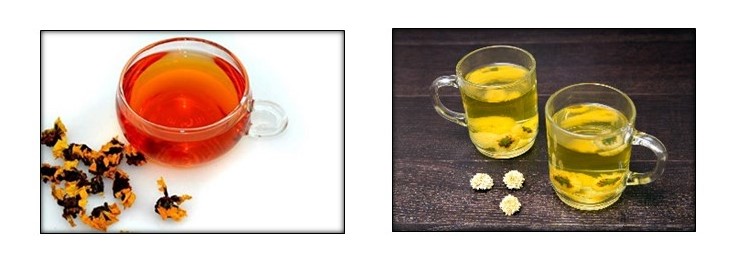 Chrysanthemum blossoms make a showy addition to whole leaf teas, mostly dark, earthy, smoky puehrs These are one of the most complex of all teas.
Chrysanthemum blossoms make a showy addition to whole leaf teas, mostly dark, earthy, smoky puehrs These are one of the most complex of all teas.
The picture below shows the range of uses of the flower, starting with a plain golden chrysanthemum tisane, then balls of green tea with the flower petals intertwined and tied with string. These unfold in the hot water to form a beautiful display of blossoms. This example mixes jasmine, marigold and chrysanthemum.
Below the tisane is a puer bing, a cake of the Yunnan black tea that is uniquely processed to age, ripen and add layers of aromas. At the bottom is a white chrysanthemum herval and some tuochas – mini-puers that provide a single cup. These come in lovely bags and colorful wrappers and include many varieties: plain, flower, cinnamon, sticky rice and ginseng, among others. These “bird nests” are named for the way they are formed in hand processing.
These generic chrysanthemum tisanes and puers get mixed reviews. They don’t have an especially distinctive character that stays in the mind and on the tongue. The main flower varieties are Golden and White. Many tea drinkers enjoy them for the same lightness of most standard herbals, including of course their being caffeine-free. The puers are generally decent quality but not outstanding and the flowering blossom teas are bland.
The most common word in reviews is “calming.”
Kunlun mountain snow highland terroir, white lowland
For a whole leaf, black tea lover, calming can be close to boring. Kunlun Mountain Snow is distinctly different. Keep in mind that chrysanthemum is a genus, not a single plant. Only a few varieties can be harvested to produce a drink; some are even used to manufacture pesticides.
Kunlun thrives two miles up in a harsh climate by drawing on rich nutrients that it stores over the winter and that feed its tender spring buds. These flourish in the sun, are fed by winds and rain and involve an extraordinary and highly dynamic interaction among over six hundred chemical compounds.
This is the generic nature of fine teas. Far from being inert dried flotsam, the leaf – in this case, the bud – is a chemical lab. Descriptions of Mountain Snow emphasize how unusual its composition is: selenium, amino acids and trace minerals that give it extra potential medicinal properties that have long been its main attraction.
Terroir is the fancy word borrowed from French wine making and refers to the combination of soil, weather, landscape and land that provides an environment that produces a special crop. It’s almost a Darwinian issue. Kunlun is too cold for the tea plant to thrive but this flower has found its niche and represents the fittest in survival.
Kunlun: a mountain megabrand
The Darwinian winners over the last few thousand years create the teas that are different and special. They largely come from remote mountain areas and benefit from communities of smallholders who craft their teas in small amounts. (Assam is the main exception, but it illustrates the Darwinian struggle; it is a lowland massive, humid, wet jungle.)
The mountains where great teas emerged became brands. Wuyi rock oolong is one of the earliest of teas gathered in clefts, on peaks, scattered on the slopes and rock crevices. Cow-swallowing and factory-crumbling geological instability mark the Wuyi terrain. That applies also to Darjeeling’s black teas from around the third highest mountain in the world and holder of many records for rainfall, and Uji’s Japanese senchas.
Wuyi, Darjeeling, and Uji are the megabrands, and the individual varieties, growers, and harvests the sub-brands. The case is the same with Kunlun. That’s the differentiator, with chrysanthemum subordinate to it and tea/herbal tea/tisane the qualifier.
Whole leaf with Kunlun infused
Several whole leaf teas add Kunlun mountain snow. A few specialist providers in Yunnan offer their own Kunlun-puehr. Typically, they take a mix of puer processed cake and break it up and then fold in high quality, fresh Kunlun Mountain Snow. Then they pressed it back into blocks or tuochas and leave it to meld the flavors as they age.
These are interesting and attractive, but you have to seek them out online. Even more attractive is d0-it-yourself. One of the most enjoyable uses of Kunlun is to make your own blend in the gong fu style. Gong fu contrasts with usual tea making by using less leaf in a smaller – preferably clay – tea pot, brewed for much shorter periods of time and re-infused to let the flavors and aromas of the tea develop with each new pouring.
Generally, the first steep is just for half a minute and shared among several drinkers in very small cups. The infusion time increases in short increments. It’s ideal for aromatic, smoky, earthy and fuller teas, less so for greens and bolder astringent blacks.
Kunlun and puer make a natural match. And a beautiful one.
Shopping for Kunlun mountain snow
Kunlun is widely available online. There are several levels of quality, defined informally with no legal or industry warranty by the wholeness and integrity of the bud and the timing of the harvesting. It sells for $4-5 an ounce – around 40 cents a cup. Just under ten years ago, its apparent scarcity and lack of distribution made it a fad product in China, as a medical wonder tea. Prices soared to over $3,000 a kilo, $70 an ounce and $6 a cup. The absurdity was short-lived. It is still advertised as “rare” and among Amazon’s twenty ads, you’ll find several offering very small units – 1-2 ounces – for $20 or more. Ignore them.
The tea is usually shipped in bottles, to preserve the buds. To brew Kunlun, you need a little less than a spoonful per cup. The temperature should be at or close to boiling and steeping time 3 minutes.
Kunlun is a surprise and a pleasure.
Tea Market
Get More Value from Your Tea: BRU Maker One
+41794574278
Jacque's Organics
(647) 804-7263
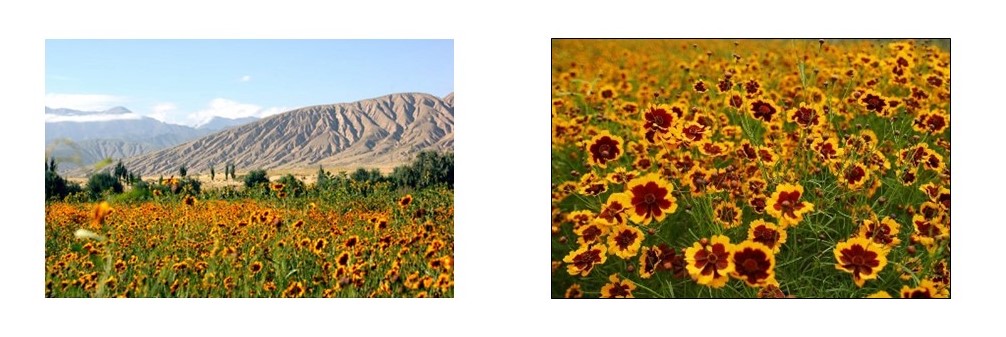

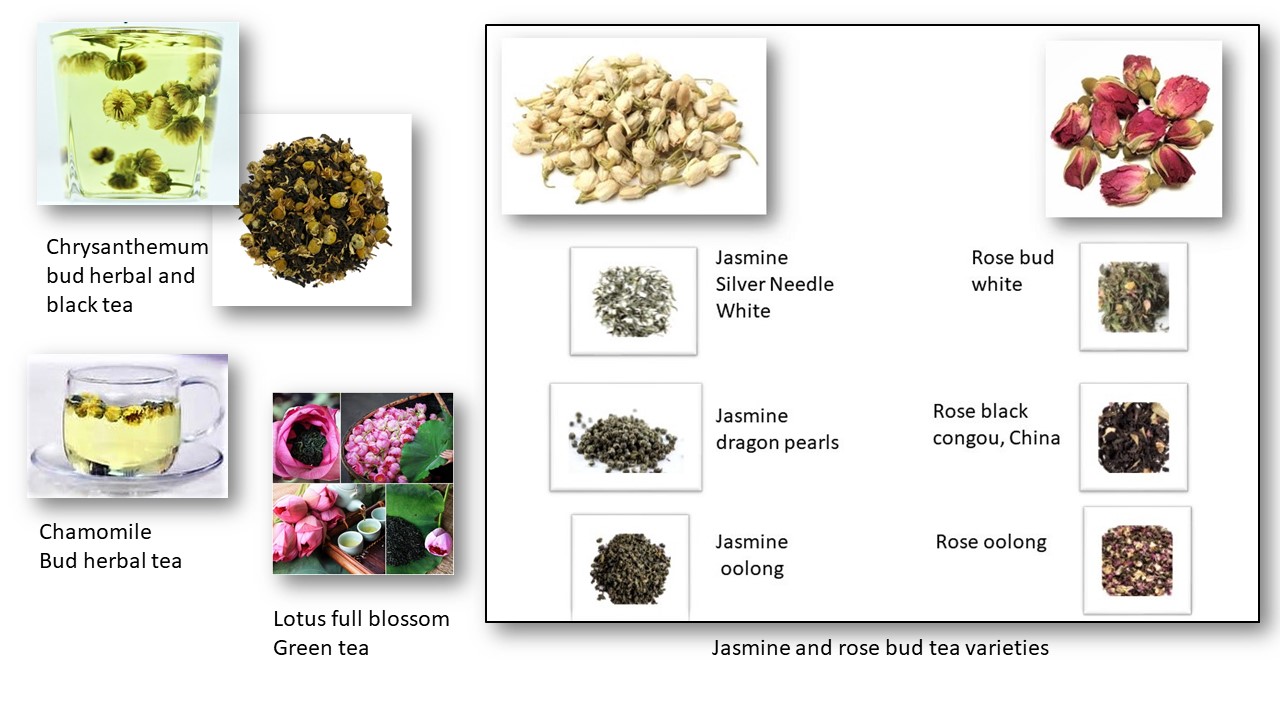
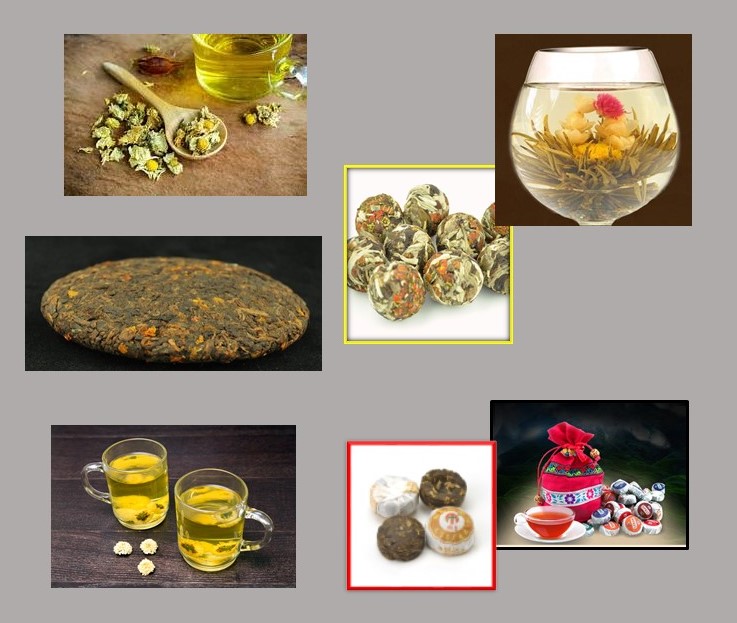
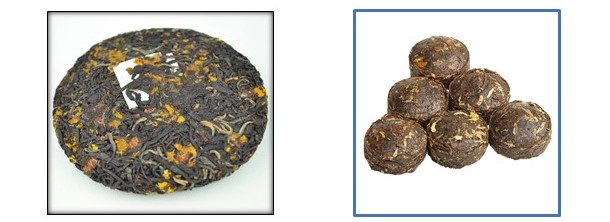
Great article, thank you Peter. I learned a lot about a tea I discovered recently and I much enjoy 😊.
I have tried Kunlun snow chrysanthemum from Amazon and ebay, I tried whole flower and bud too, all I camn say that after a week of drinking it during work (I used 2.5 grams of flower and infused it 3 times) I feel much better, calmer, with more energy, now after 2 weeks it seems that the effect is builing up, as with all herbs it is better to take a pause from time to time, drink it for 3 weeks than leave a week off and repeat, or when your body tells you it has enough than stop for a while, so far this is mild, with Japanese green tea I cannot drink it every day, nor aged white tea, or pu-erh, generally roasted and aged oolongs can go every day. I have been drinking tea since 2006, gong fu style, and bowl style during work, but snow chrysanthemum was elusive, I had all the others before it is only last year that I discovered it, I also tried mixing it with ripe pu-erh, generally a mild ripe, it is great they wok synergistically. It is a good thing to have in your tea collection.
Nice article, but there is some misinformation, and omitted information, which is common in every discussion of Kunlun Snow Chrysanthemum or Snow Chrysanthemum I have seen. As you can see in the quotation you cite from the research paper on one of its constituent phytochemicals, the plant’s botanical name is Coreopsis tinctoria. Elsewhere you mention the Chrysanthemum genus. Well, Snow Chrysanthemum is in the Coreopsis genus–it is not a chrysanthemum at all, although it is deliberately conflated with chrysanthemums because of its local name. In fact it was only introduced to the Kunlun Mountains around 1900. It is actually native to the Southern and Western plains states of the United States, and some of its common names in the United States are golden tickseed, calliopsis, and plains coreopsis. It has now spread over most United States, including the eastern coastal states, most of North America, and most of the world. The Native American Kuni people used it as a traditional medicine, and made a beverage out of the flowers until it was supplanted by coffee when coffee was introduced to them. They also used it to make a red dye. It is listed in the extensive ethnobotany of the Kuni Indians. I wonder why I can find no “wildcrafted” source in the United States. It grows in all sorts of soil, perhaps preferring a sandy soil, and American plains have a diversity of climate conditions and elevations, some of which are probably similar to the Kunlun Mountains, so I doubt that is what gives it its unique properties, and most likely the specific genus, species, and variety.
WHERE MIGHT ONE BE ABLE TO PURCHASE Kunlun Snow Chrysanthemum?
THANK YOU FOR YOUR REPLY
what is 【Cancer Cell Assassin】Golden Silk Red Snow Tea